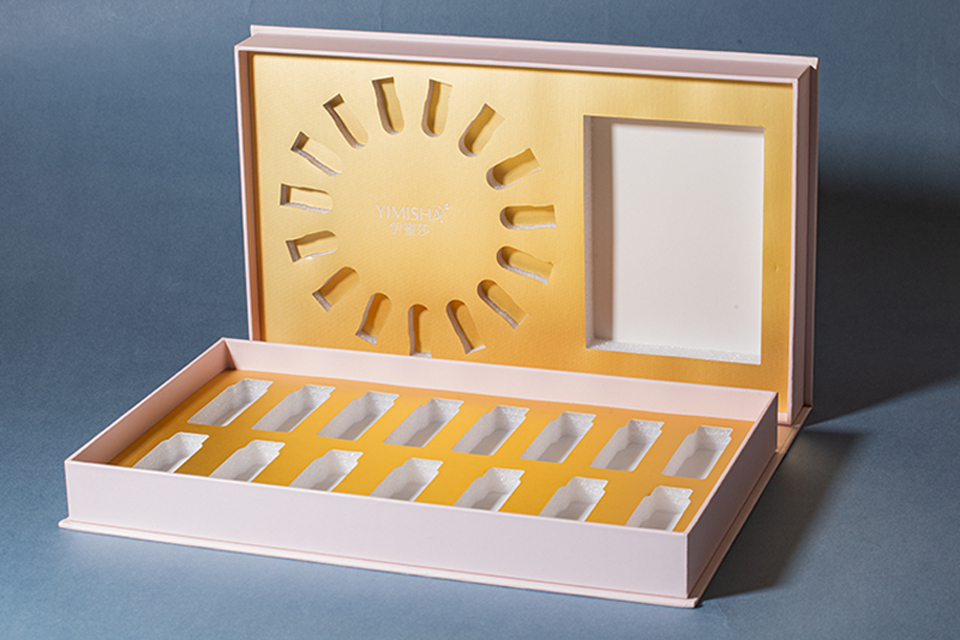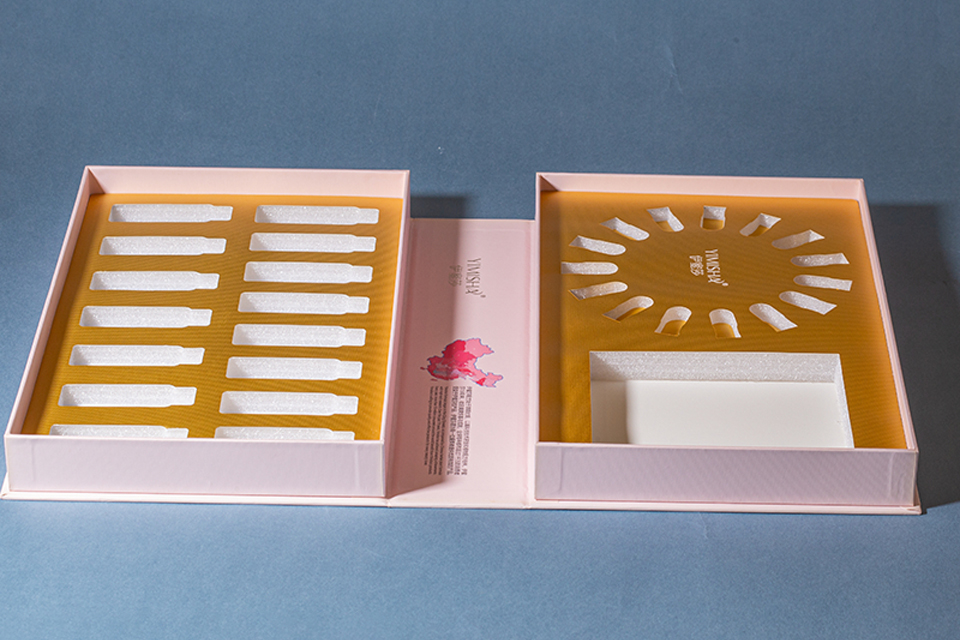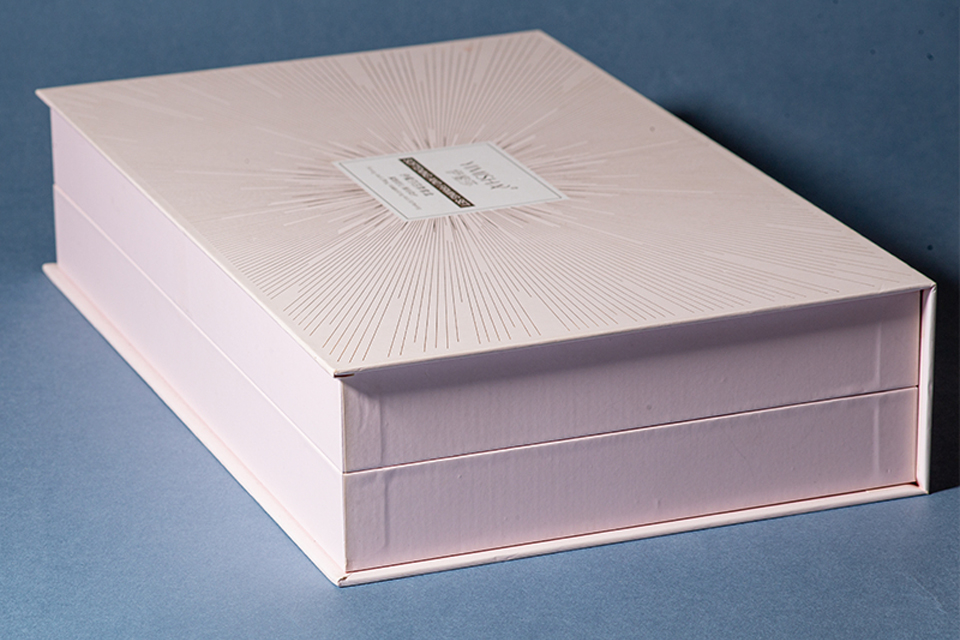Concepts d'emballages de produits écologiques et durables : 6 méthodes clés
Les emballages durables marquent un tournant décisif vers la responsabilité environnementale dans la discussion sur les articles. Cette technique met l'accent sur les matériaux et les configurations qui minimisent l'empreinte écologique.
Intro
Emballages durables spécifie un changement crucial en faveur de la responsabilité environnementale dans la discussion sur les articles. Cette technique se concentre sur les matériaux et les conceptions qui minimisent l'empreinte écologique. Les entreprises y parviennent en utilisant des sources durables, réutilisables ou recyclées avec succès. De plus, les emballages produits véritablement durables intègrent généralement des composants biodégradables. Ces éléments garantissent un retour bénin à l'environnement après utilisation. Ce post présente 4 concepts essentiels d'emballages produits durables. Nous analyserons chaque approche, en soulignant ses bases cliniques et son application pratique. Notre objectif reste de donner aux entreprises les moyens d'adopter des solutions d'emballage de produits plus écologiques. Ces solutions profitent à la fois à la planète et aux clients avertis.

1. Maximiser les mesures des emballages des produits pour la spécificité des produits
Un emballage produit durable fiable exige une correspondance précise entre la taille du plan et la quantité d'articles. De nombreuses entreprises expédient cependant des produits dans des contenants beaucoup plus grands que nécessaire. Cette technique produit des déchets importants et évitables. Elle augmente également les dépenses en matériaux. De plus, elle intensifie les coûts de livraison en raison d'une utilisation inefficace de l'espace. Par conséquent, les entreprises doivent créer des emballages portables. Cet emballage doit répondre avec diligence aux mesures et à la forme détaillées de l'article. Une telle optimisation dimensionnelle arrête directement la consommation de ressources. Elle réduit également l'inquiétude environnementale globale liée à la distribution et à la logistique des produits. Les dispositifs modernes de conception assistée par ordinateur (CAO) permettent aux développeurs de produire des structures d'emballage extrêmement optimisées. Les systèmes d'emballage de produits à la demande permettent en outre aux entreprises de produire des boîtes parfaitement dimensionnées pour chaque livraison. Cette procédure réduit considérablement le remplissage de vide et l'utilisation de matériaux. Cette conception précise de la disposition des emballages des produits démontre un engagement fort envers la préservation des ressources et l'efficacité opérationnelle, des principes essentiels des emballages durables.
2. Tirer parti du carton ondulé pour un transport sécurisé
Le carton ondulé fournit un service extrêmement robuste et polyvalent pour l'expédition. Son support de papier ondulé fabriqué, pris en sandwich entre des cartons plats, fournit un rembourrage de qualité supérieure. Cette structure protège efficacement les produits pendant les rigueurs du transport. Les fabricants peuvent facilement transformer le carton ondulé en une variété de tailles et de formes. Cette adaptabilité le rend extrêmement approprié aux différentes exigences d'emballage du commerce électronique et aux différents types d'articles. Le produit contient principalement des fibres de papier. Ces fibres proviennent fréquemment de contenu recyclé. Cette forte proportion de matériaux recyclés réduit considérablement le besoin de pâte vierge. Cela sauve les forêts. Cela réduit également l'énergie et l'eau généralement nécessaires au traitement des fibres vierges.
Le carton ondulé correctement traité présente une excellente biodégradabilité. Cela est particulièrement vrai s'il est exempt de finitions plastiques ou d'encres non biodégradables extrêmes. Sa recyclabilité fondamentale est un avantage environnemental crucial. Une gestion efficace des matières premières dans les flux de recyclage permet de repulper les fibres. Elles peuvent ensuite être transformées en nouveaux produits papier. Cette méthode circulaire fait du carton ondulé une option éco-responsable. Il fournit simultanément une intégrité architecturale. Les entreprises peuvent également imprimer directement sur les surfaces ondulées. Cela améliore la discussion de la marque. Il communique une image professionnelle sans nécessiter d'étiquettes ou de couches supplémentaires. Les fournisseurs adoptent largement les boîtes en carton ondulé pour ces avantages combinés de résistance, de durabilité et de capacité de marque, ce qui en fait un concept d'emballage durable de premier plan.
3. Réduire systématiquement l'utilisation de plastique dans les emballages des produits
Environmental researchers reveal serious issues pertaining to the prevalent impact of conventional plastics on international ecological communities. A lot of petroleum-based plastics display extreme determination. They need many years, or even centuries, to weaken in the natural surroundings. This long life brings about extensive air pollution on land and in aquatic ecological communities, typically breaking down into hazardous microplastics. For that reason, businesses have to proactively reduce or remove plastic utilization in their lasting product packaging methods. Although plastic deals properties like moisture resistance and openness, its harmful ecological impacts commonly surpass these benefits for several applications.
Many item boxes generally integrate a plastic movie or home window. Companies ought to proactively look for options to this practice. As an example, cutting-edge paper-based products can use similar item defense from dust and minor abrasions. Securely constructed product packaging layouts or paper-based seals can also safeguard items properly. While some suggest plastic secures products from dirt, robust non-plastic layouts can achieve comparable end results without the eco-friendly burden. Eliminating plastic requires cautious consideration of item security requirements. Nevertheless, the long-term environmental expense of plastic packaging requires a decisive shift towards more benign products. Focusing on non-plastic sustainable packaging ideas directly attends to a crucial worldwide ecological difficulty.

4. Proactively Select and Apply Recycled Packaging Products Businesses
Customers need to actively choose and incorporate recycled packaging products into their procedures. This makes up a straight and impactful sustainable packaging action. The process starts with diligently sourcing products that have verified recycled material. Providers need to provide clear documentation for post-consumer or post-industrial recycled web content percents. Usual recycled product packaging options include paperboard manufactured with high portions of recycled fibers. Recycled plastics, such as rPET (recycled polyethylene terephthalate) and rHDPE (recycled high-density polyethylene), are also increasingly offered and practical for bottles and various containers. In addition, recycled glass and steels use near-infinite recyclability, making them excellent choices for their corresponding packaging layouts.
Firms must select recycled materials suitable for their particular item’s protective and presentational demands. For example, recycled paperboard stands out for secondary packaging applications like shoe boxes, electronic casing, or cosmetic cartons. rPET is very suitable for beverage containers and food trays. When developing product packaging with recycled products, services might observe mild variations in shade or appearance contrasted to virgin material counterparts. Nonetheless, modern reprocessing innovations commonly lessen these visual distinctions. The printability on recycled substrates is normally outstanding, allowing for strong branding. Actively making use of these materials for item boxes, shipping mailers, and interior safety elements demonstrates a substantial commitment to sustainable packaging. This mindful choice directly minimizes dependence on virgin sources and supports round product circulations.
5. The Round Economic Situation and Recycled Product Packaging
Recycled packaging plays an important function within a round economy version. This economic model aims to eliminate waste. It likewise strives to keep materials in productive use for as long as possible. Instead of a standard direct “take-make-dispose” system, a round economic climate emphasizes strategies like reuse, repair work, and extensive recycling. When services constantly use recycled packaging, they actively take part in closing material loopholes. This indicates that waste from one product’s lifecycle comes to be a useful input resource for one more. The reliable and widespread use of recycled packaging substantially conserves virgin natural deposits. It demonstrably decreases the ecological impact associated with extracting and refining new resources, such as timber, petroleum, or ores.
In addition, a durable system centered on recycled product packaging diverts considerable quantities of waste from loaded down landfills and contaminating incinerators. This activity directly reduces land contamination. IT also alleviates greenhouse gas emissions that arise from breaking down waste in garbage dump sites. The overall success of this round system depends greatly on effective framework for collection, arranging, and reprocessing of materials. Active customer engagement in appropriate recycling techniques is also a crucial part. By welcoming recycled product packaging, firms not only boost their private environmental impact but additionally sustain tje more comprehensive social advancement of a more sustainable, round method to material administration. This essential shift is crucial for attaining long-lasting eco-friendly health and wellness and making sure global source safety and security.
6. Browsing Biodegradable and Compostable Options
The concepts of biodegradability and compostability provide advanced sustainable product packaging concepts. However, a specific scientific understanding of these terms is vital for efficient application. Biodegradable materials break down through all-natural microbial activity. This procedure transforms them into elements like water, carbon dioxide, and biomass. The duration and details ecological problems required for this decomposition process differ considerably in between products. Importantly, not all products classified “biodegradable” easily decay in common land fill envrionments or sensitive marine settings. Compostable packaging stands for a distinct part of naturally degradable materials. These products have to satisfy strict standards. They need to break down within particular timeframes under regulated composting conditions, either commercial or home composting, as verified by acknowledged accreditations. They ultimately change right into usable compost, a useful dirt amendment.
Typical compostable packaging products include Polylactic Acid (PLA). PLA is stemmed from renewable energies like corn starch or sugarcane. Polyhydroxyalkanoates (PHAs) are an additional instance, generated by microorganisms. Starch-based polymers additionally feature prominently in thsi category. While these materials are innovative, they present certain functional obstacles. Effective composting of several such materials, especially PLA, requires dedicated commercial composting centers. These facilities are not yet generally available. Consumer confusion between biodegradable, compostable, and conventional recyclable plastics can result in incorrect disposal. This mis-sorting can pollute existing reusing streams, minimizing their performance. For that reason, businesses going with compostable packaging must supply clear, distinct disposal guidelines for consumers. They need to likewise meticulously consider the availability of appropiate composting facilities for their target audience to guarantee responsible end-of-life management.
Why Select These Sustainable Product Packaging Ideas?
The widespread adoption of sustainable product packaging remedies is rapidly speeding up. This shift transforms it from a particular niche consideration right into a mainstream organization essential. Several merging aspects drive this substantial pattern. Firstly, worldwide ecological understanding has risen considerably. Customers significantly comprehend the damaging influences of human tasks, particularly waste generation, on fragile environments. Numerous clinical surveys and authoritative reports continually highlight the seriousness of enviromental management. This heightened awareness straight affects consumer acquiring decisions. Modern consumers actively seek out and demonstrably prefer brands that display an authentic commitment to sustainability. They commonly inspect packaging as a visible and tangible indicator of a business’s wider environmental ethos.
Secondly, governing landscapes worldwide are progressing. Governments significantly carry out stricter ecological regulations worrying packaging. These include Extended Producer Responsibility (EPR) systems, which put even more duty on producers for the end-of-life monitoring of their packaging. Tax obligations on single-use plastics and legal requireds for minimum recycled web content in new product packaging are likewise ending up being typical. Organizations should proactively adjust to these guidelines. This adaptation is essential to maintain compliance and stay clear of potential punitive damages or reputational damages. Thirdly, corporate social responsibility (CSR) is currently commonly recognized as indispensable to brand name credibility and long-lasting company value. Adopting lasting packaging ideas straightens directly wiht core CSR objectives. It substantially boosts brand nmae image. It likewise promotes more powerful relationships with all stakeholders, including investors, workers, and regional communities. Lastly, lasting product packaging can generate unique economic benefits. Optimizing material use straight reduces basic material expenses. Lightweighting packaging can substantially reduce shipping costs. Appealing efficiently to thge growing segment of eco-conscious consumers can also drive sales development, increase market share, and develop long lasting brand commitment.

Verdict
The essential for lasting packaging options expands more powerful daily. These techniques are not only environmentally crucial. They are also significantly economically sensible and technologically available for services of all dimensions. Brands throughout varied sectors are actively re-evaluating and changing their packaging techniques. They recognize the diverse benefits that accompany an honest accept of sustainability. By thoughtfully carrying out the sustainable product packaging concepts gone over– such as rightsizing bundles, making use of robust and sustainable materials like corrugated cardboard, methodically decreasing plastic usage, prioritizing recycled web content, and carefully checking out advanced eco-friendly or compostable alternatives– your organization can significantly add to a healthier earth. This calculated shift fosters favorable brand assumption. It likewise aligns your procedures with the progressing expectations of contemporary, environmentally aware customers. Taking on these sustainable product packaging techniques is a sensible, forward-thinking action in the direction of an extra responsible and resilient business future.
